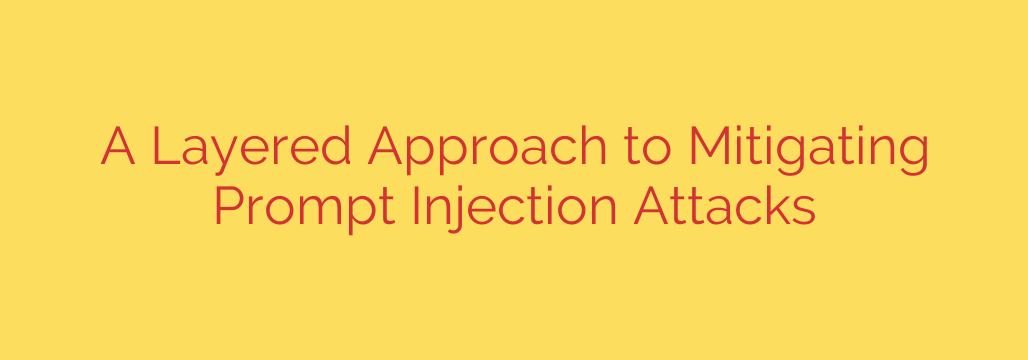
Protecting Large Language Models (LLMs) from malicious manipulation is a critical challenge in today’s AI landscape. Attackers are increasingly using techniques known as Prompt Injection to hijack models, bypass safety measures, or extract sensitive information. These attacks exploit the very nature of LLMs, which are designed to follow instructions provided in the input prompt.
A single defense mechanism is rarely sufficient against these sophisticated threats. The most effective strategy involves implementing a layered security approach, similar to how traditional systems are protected. Think of it as building multiple walls around your valuable AI systems.
The first layer often involves robust input validation and sanitization. This means scrutinizing incoming prompts for suspicious patterns, keywords, or structures before they even reach the core LLM. Techniques like rule-based filtering, machine learning classifiers, or even rewriting prompts can help neutralize simple injection attempts.
Next, consider defenses around the LLM itself. While directly “hardening” the model against injection is difficult and an active area of research, principles like the principle of least privilege are crucial. The LLM should only have access to the minimal resources, data, or functions necessary to perform its intended task, limiting the damage an attacker could cause even if they achieve partial control.
Another vital layer is output filtering and sanitization. Even if a malicious prompt gets through and causes the LLM to generate undesirable output (like harmful instructions or leaked data), intercepting and cleaning the response before it’s presented to the user or used downstream is essential. This acts as a last line of defense against harmful content.
Implementing human oversight is also critical, particularly for high-risk applications or actions. Having a human review certain AI-generated content or decisions can catch things automated systems miss.
Finally, operating LLMs within isolated environments or sandboxes can contain the potential damage from a successful injection attack, preventing it from spreading to other parts of your system.
Effectively mitigating Prompt Injection requires a comprehensive strategy that combines these defensive layers. Relying on just one method leaves significant vulnerabilities. By building a strong, multi-faceted defense, developers and organizations can significantly enhance the security and reliability of their AI systems. This approach is key to staying ahead of evolving threats and ensuring AI serves its intended purpose safely.
Source: http://security.googleblog.com/2025/06/mitigating-prompt-injection-attacks.html








